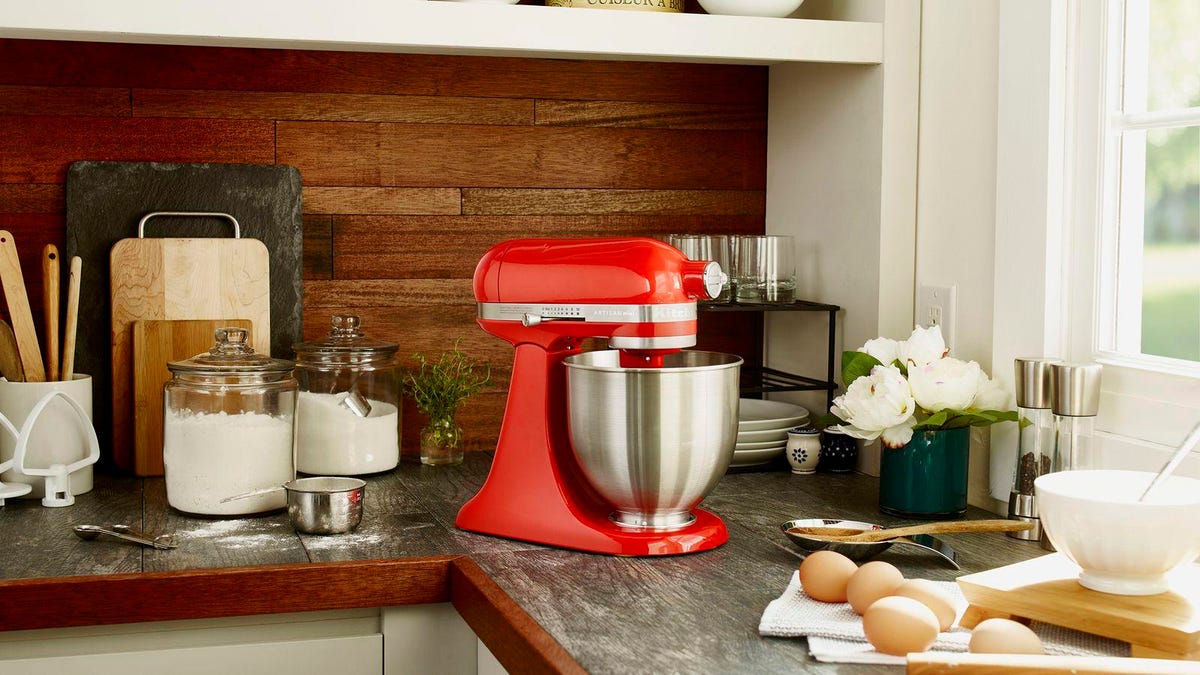 Why You Can Trust CNET
Why You Can Trust CNET How to Clean a Stand Mixer
Give your stand mixer a regular deep clean and it'll pay you back with years of service.

Using a stand mixer in real life never quite works out as you see on TV. With all those whirling attachments spinning wet and dry ingredients, you're bound to dirty up this kitchen workhorse from time to time.
That's all part of the deal, but cleaning your KitchenAid after use will keep it sparkling clean and humming along. Giving it a deep clean after every few uses is an even better way to extend the life and look of this versatile kitchen appliance.
Below are some helpful tips and steps to take when cleaning your stand mixer.
Wipe it down, obviously
After removing the bowl and attachments, give the entire mixer a wipe-down. Dampen a cotton cloth with warm water and then use it to remove any stubborn food and dust. Don't forget to wipe down the bottom of the mixer. Drips can seep underneath and cause rust.
If your mixer is oily and warm water just isn't cutting it, you may need to use a cleanser. I recommend window cleaner over other kitchen cleaners because it doesn't need to be rinsed off and won't leave a film that can attract dust.
You can make your own by mixing 1 cup of water, 1 cup of rubbing alcohol and 1 tablespoon of white vinegar in a spray bottle. Don't use a cleanser every time you clean your mixer, though, as it can wear down the finish.
Swab those crannies
Flour and other ingredients can also make their way into the holes around the tilt mechanism (also called the motor head locking lever) and speed switch. The best way to clean these areas is by spraying a cotton swab with cleanser and then working it in and out of the holes. You could also use a compressed air duster like this $10 can, but don't expect that to remove really sticky bits.
Swab out those tiny nooks.
Attachments and attachment areas
Attachments are what make stand mixers handy, but they need special care. The wire whips, burnished dough hooks and burnished beaters should be washed by hand with hot water and dish soap, then rinsed well and dried right away to avoid tarnishing.
Most mixers have two different attachment areas and both need a good cleaning after each use. If you don't clean these areas well, the mixer may stop working properly. For the beater shaft attachment area, dampen a sponge, fold it around the attachment area and twist your hand back and forth. This will get grime out of the coils from around the shaft.
The attachment hub should be cleaned with a cotton swab, just like the switch areas. Dampen your cotton swab with cleanser and then wipe down the inside of the hub. The hub cover and attachment knob can be cleaned in the dishwasher or by hand.
Are KitchenAid attachments dishwasher-safe?
The bowl, coated flat beaters and coated dough hook are the only attachments that can be put in the dishwasher. Everything else should be hand washed.
For larger attachments, including pasta cutters and prep shredders, certain parts like blades and metal fittings may be dishwasher safe while other parts are not. Be sure to check the manual or product page before you load them in. And the stand mixer base is definitely not dishwasher safe so don't even think about it, even if it fits inside.
Editors' note: This article was originally published on Jan. 4, 2016, and has been updated.

